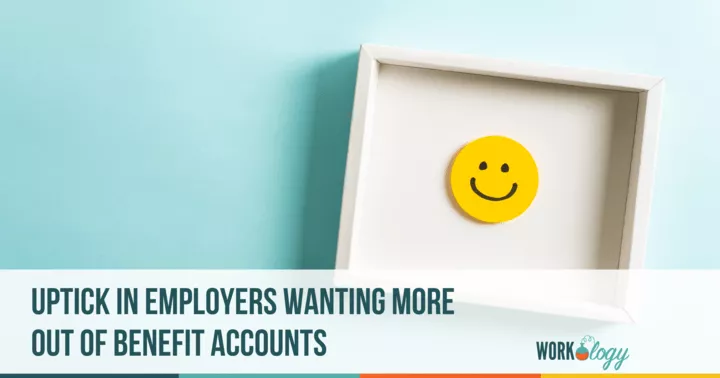More and more employers are looking for benefits that improve employee engagement, and ultimately, the financial wellness of their employees and company. This focus on driving outcomes for their employees is an encouraging trend and is a promise HSA Bank has delivered on for two decades as we have worked with employers to create custom benefit plans for their employees. The right plan design with the right benefit accounts and employee communications plan increases employees’ retirement readiness, employee job satisfaction and employers’ tax savings.
Employee Benefits Engagement: Uptick in employers wanting more out of benefit accounts
Through the annual HSA Bank Health & Wealth IndexSM, we’ve tracked for four years the engagement of Americans in their health and wealth. While we’ve seen engagement slowly increase over time, the environment of the COVID-19 pandemic has made employees much more sensitive to their overall health and well-being. For example, in the past year there has been an 9% increase in saving for future healthcare costs and more than 80% of respondents made lifestyle changes to improve their health.
All employers should be aware of this increased interest in health and wealth as employee satisfaction and engagement with their benefits is key to overall satisfaction and engagement. Gallup’s 2017 State of the American Workplace Report, which came from a Gallup research study including more than 31 million respondents, clearly shows this. According to the study, business units within organizations that ranked highest in employee engagement showed 17% higher productivity rates, 20% higher sales rates and 21% higher profitability when compared to those who ranked lowest. The study also showed that business units ranking highest in employee engagement also experienced 59% lower turnover for companies in low-turnover categories, 24% lower turnover for companies in high-turnover categories, and 41% lower absenteeism than business units ranking the lowest.
At a time when employee turnover is at an all-time high, benefit and plan design decisions are especially important for employers. So how can an employer increase their employee’s engagement with their benefits plans to ensure they are satisfied now and financially ready for the future?
We’ve found that HSAs are a particularly critical component to engagement and retirement readiness. First, HSAs have a triple tax advantage: contributions are not subject to federal income taxes; earnings from interest and investments are tax-free; and distributions to pay for qualified medical expenses are tax-free. Second, HSAs play both a short- and long-term role in preparing for the future. There’s no ‘use it or lose it’ when it comes to HSAs. For both investment and cash accounts, balances carry over from year to year and grow tax free, offering an opportunity to save specifically for healthcare costs in retirement. In fact, according to the annual HSA Bank Health & Wealth IndexSM HSA consumers are 17% more likely to save for future healthcare expenses than those without an HSA.
HSAs also provide tax savings for employers, so optimizing this benefit through a combination of plan design, incentive structure and year-long employee engagement benefits both employers and employees.
At HSA Bank, we’ve seen the evolution and conjunction of HSAs, employee engagement and benefit programs. In the early days, we saw employers simply select benefit programs to check a box without close consideration of the unique needs of their employee population.
Today, we see expectations among employers shifting as they place an emphasis on driving outcomes for their employees. These expectations are something we continue to meet as we work with large and small employers to customize benefit plans, create engagement programs, and support members in their pursuit for future preparedness for healthcare costs in retirement.
As employers look to tackle challenges, whether it’s improving engagement, striving for increased retention, or recruiting new talent, benefit programs and HSA offerings need to be significant considerations in these strategies. Learn why HSA Bank is a trusted partner to more than 35,000 employers nationwide and how we can empower your employees to gain greater control of their healthcare costs here.









One Comment
incentivize
Comments are closed.